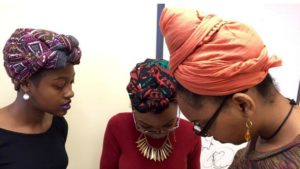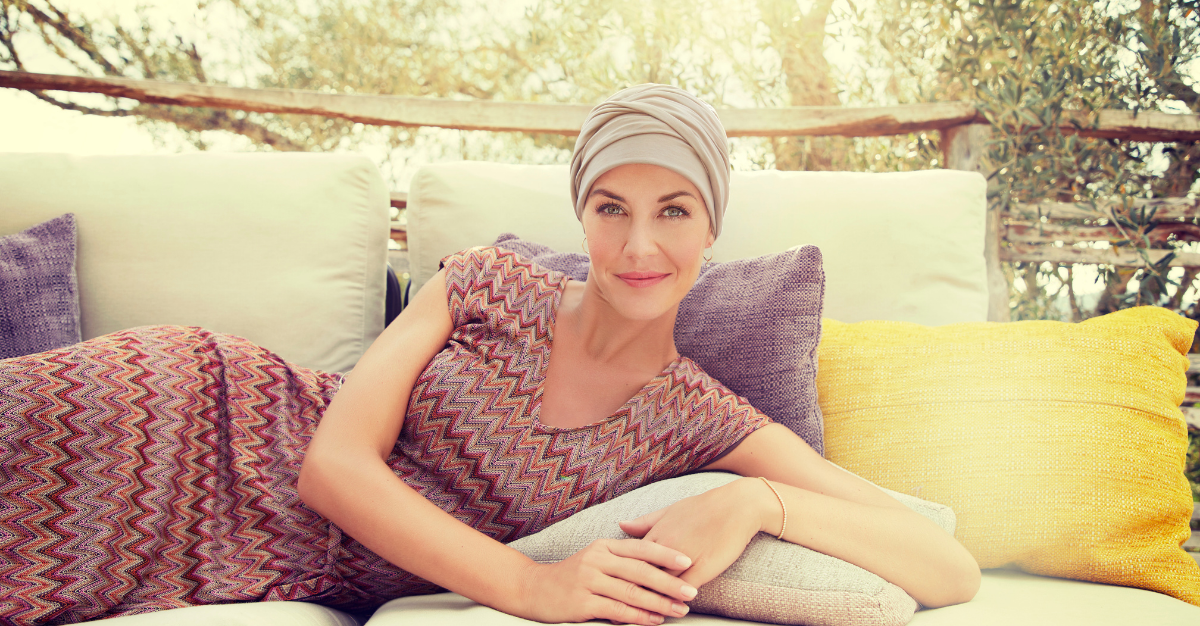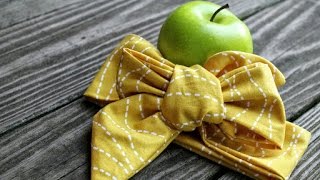African Head Wraps for Natural Hair: Learn How to EASILY Tie Wraps
- Posted on 06 February, 2019
- Hot Topic
- By Kenneth

Protective styling seems like a relatively simple concept.
The basic premise is to reduce frequent manipulation of your hair, protect the ends of your hair from potential damage, and to encourage length retention.
Even though a natural hair regimen based on protective styling concepts is often low maintenance, it’s not uncommon to spend 15-20 minutes per day applying edge control gel, creating protective styles, and moisturizing your hair.
So, at the end of the day, many women feel like protective styling is still an ongoing effort. If you’re truly wanting a low maintenance day, head wraps are an interesting alternative.
Just tie and tuck them, and off you go. Now you’ll still want to take care of your hair underneath the wrap, but wraps can serve as a lower maintenance alternative when you need a break.
The African head wrap is one of the oldest accessories that is still important to the culture of the modern African American woman, but it has had different meanings throughout history.
Headscarves trace their origins back to sub-Saharan Africa and were designed using traditional patterns and colors.
These fashionable scarves held a lot of cultural significance there since they let everybody know about a woman’s marital status, age, or even wealth. They were also used to enhance a woman’s beauty just like today’s accessories.
Unfortunately, as women from Africa arrived in the United States, the headscarf became a sign of enslavement. Fortunately, as African American men and women started to fight for equality and freedom, the traditional scarf reemerged as a symbol of Afrocentric celebration and pride.
Today, that meaning still persists and there are numerous unique head wrap styles available for black women.
Head wraps are accessories with a rich heritage and history and come in a wide variety of colors, patterns, fabrics, and sizes. Today, you will find people wearing them for both special and casual occasions.
While you often see head wraps worn in the African American community, the styles are not limited to those in the African American community.
As you can see from the video tutorials (below) show in this article, women from all races, ethnicities, and nationalities are wearing head wraps or scarfs.
Twisted Wrap Headscarf Tutorial
Twisted Wrap Head Scarf Tutorial with BONUS Messy Bun
In this video, Amanda, from The Fundamental Home channel on YouTube, walks through a step-by-step tutorial on creating a twisted wrap headscarf on type 1 hair.
The first step in to create a messy bun that’s secured with a bobby pin. To create the twisted head scarf style, start with the scarf behind your head or along the nape of your neck.
Amanda then pulls the head wrap up towards the crown of her head and twist the scarf twice creating the wrap with a messy bun in the back. To complete the tutorial, Amanda recreates the twisted head scarf three different times using different types of scarfs.
Sophisticated Turban Double Knot Tutorial
Wrapunzel Turban Tutorial: Double Knot!In this video, Andrea Grinberg from the Wrapunzel YouTube channel creates a very sophisticated double knot turban using two thin scarfs.
Some women include a head wrap as a last minute convenience or as part of a carefully planned outfit. Simply put, the versatility of the head wrap is its crowning glory.
What’s an African Head Wrap?
Traditionally, the African head wrap is a patterned piece of cloth tied in intricate designs around the wearer’s head. It can be as long as a yard or as small as a square bandana.
Typical wraps, however, are about 60 inches in length, or as long as your average scarf. In fact, many women regularly wear patterned pashmina scarves as head wraps thus getting multiple uses out of the accessory.
What Are African Head Wraps Called?
African head wraps go by different names in different languages including ‘Iduku’ in IsiZulu, ‘Gele’ in Yoruba, ‘Duku’ in Chichewa, and ‘Dhuku’ in Shona.
Why Do People Wear African Head Wraps?

Here are some of the reasons why head wraps are worn by women:
- Protecting Hair at Night: Women often use satin or silk headscarves rather than bonnets at night to protect their hair while sleeping.
- Taming Hair During the Day: If you don’t feel like doing your hair in the morning or even the night before, you can easily and effectively keep your curls in check using a large head wrap.
- Part of Ceremonial Events: Many Africans that feel inspired by their native culture may wear tribal headscarves for ceremonial events such as weddings.
- Fashion: Many African American women love wearing head wraps for simplicity and style. Pre-tied African head wraps are a convenient way for looking great and covering your hair, while untied head wraps can be shaped in numerous unique and captivating ways.
- Celebrating African Heritage: As women have increasingly started loving their natural hair, many have started to incorporate fashionable head wraps into their daily appearance as a point of pride. African head coverings are also worn for celebrating Kwanzaa.
- Putting a Twist on Church Wear: Instead of wearing the traditional Sunday hat, some women prefer wearing a jeweled or patterned head wrap.
How to Wear an African Wrap

The African headwrap can be worn with long hair, short hair, bangs, braids, and everything in between. If you would like to learn how to tie an African headwrap the right way, but don’t know where to begin, we recommend watching the video tutorial available within this article.
The most popular styles for wrapping are the front-knotted wrap, the bow style, the top bun, and the twisted wrap. In addition to the videos that we’ve included in this article, you find numerous women on YouTube that have uploaded video tutorials.
Alternatively, you can use pre-tied headscarves if you find the DIY approach too difficult.
When it comes to style selection, you are only limited by your imagination.
Styles include:
- Solid colors
- Traditional African symbols and patterns
- African-inspired colors such as orange, green, red, and black
- Floral patterns
Styling Tips for African Wraps
Since wraps typically come in Afrocentric patterns, you might be hesitant to accessorize them. In fact, many women prefer wearing wraps and caftans made out of similar fabric to keep everything simple.
It’s an amazing look, obviously, but it is possible to get more wear out of a wrap by pairing it with jewelry and other accessories. For you can wear a wrap with a neutral shirt and jeans to add some flair and flash of color to your casual look.
Celebrating Your Heritage
Women are increasingly turning to headscarves for style and elegance, and it’s now safe to say that these accessories won’t be going anywhere soon.
In fact, the growth in their popularity means that you can find African head wraps being sold in numerous places including your favorite Afrocentric clothing stores.



